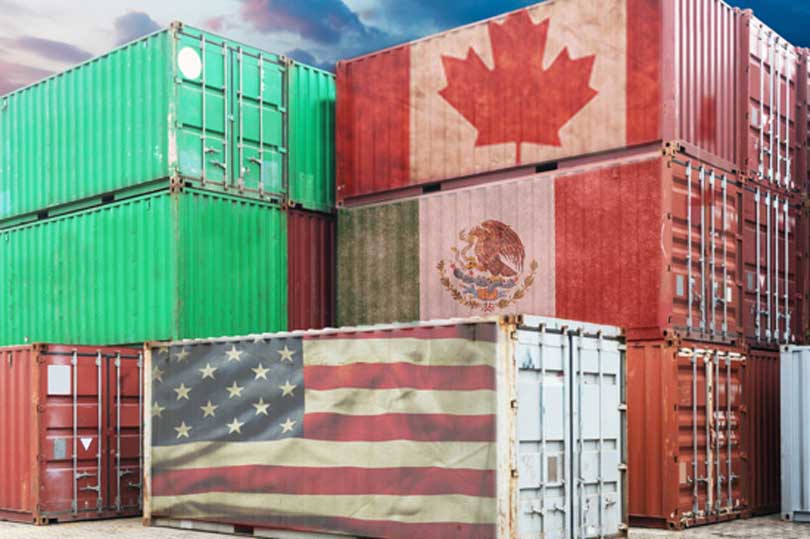By Jessica Domel
Multimedia Reporter
A little more than $68 billion dollars, 176,000 jobs and $2.2 billion in agricultural and food exports hangs in the balance as Congress prepares to vote on the new U.S.-Mexico-Canada Agreement (USMCA).
The deal, according to a new report from the U.S. International Trade Commission (ITC), would likely have a positive impact on all broad industry sectors within the U.S. economy.
“Manufacturing would experience the largest percentage gain but services would also experience large positive impacts, as would agriculture,” Veronica Nigh, economist for the American Farm Bureau Federation, said in an interview with the Texas Farm Bureau (TFB) Radio Network.
The ITC’s model estimates implementation and enforcement of USMCA would boost the U.S. economy by .35 percent or $68.2 million and employment by 176,000 jobs.
“USMCA would likely have a positive impact on U.S. trade, both with USMCA partners and with the rest of the world,” the report said.
Exports from the U.S. to Canada are forecast to rise by $19.1 billion, or 5.1 percent, through USMCA.
Sales to Mexico are expected to rise by $14.2 billion or 6.7 percent.
“USMCA is a broad trade and investment agreement. Because NAFTA (North American Free Trade Agreement) eliminated tariffs in most sectors, USMCA largely involves rule changes that impact a number of industries,” the report said.
If approved by Congress, USMCA would increase tariff-rate quotas (TRQs) for dairy, poultry, egg and egg-containing products.
“The combined effort of all USMCA provisions would increase total annual U.S. agricultural and food exports by $2.2 billion (1.1 percent) when fully implemented,” the report said. “A Commission simulation that considered only the effects of the agriculture market access provisions in USMCA showed increased agriculture and food exports to the world of $435 million.”
Dairy exports to Canada and Mexico are forecast to rise $227 million and $50.6 million, respectively, over the baseline, while imports are forecast to grow by $227.9 million.
“Increased exports to Canada would be driven largely by higher exports of cheese and other milk and cream products,” the report said. “New country-specific TRQs in Canada would create additional opportunities for U.S. exports of milk and milk powder, cheese, butter and other products.”
Canada has agreed to eliminate its class 6 and 7 milk pricing system under USMCA. The system, in the past, has largely kept U.S. milk out of the Canadian market.
Once implemented, Canada would establish a duty-free TRQ for live chickens and chicken meat from the U.S.
“Model results indicate that U.S. poultry meat exports to Canada would increase by $183.5 million (or nearly 50 percent) in year six of the agreement,” the report said.
There would be a small increase in wheat exports for the United States.
The U.S. would maintain its TRQs on sugar and sugar-products and dairy products.
Trade of most products between the three countries would continue to be duty-free under USMCA just as it is under NAFTA.
“Now that the ITC report is done, we’ve got a couple of other things that the administration needs to send and that would be the final text,” Nigh said. “It would also include the draft implementing legislation and one other piece—the bill itself.”
As part of the negotiation process, Mexico promised to make changes to their labor laws. That’s made it through part of their Congress, and officials are expected to pass the legislation in April.
“On the Canadian side, their parliament will be on recess, or out of session, here within the next six to eight weeks,” Nigh said. “So there are some timelines from our partners’ standpoint that are important when we’re talking about getting this deal done.”
Canada’s House of Commons will be in recess June through November 2020, after their federal election in October.
With the U.S. presidential election in November 2020 and other political fact

